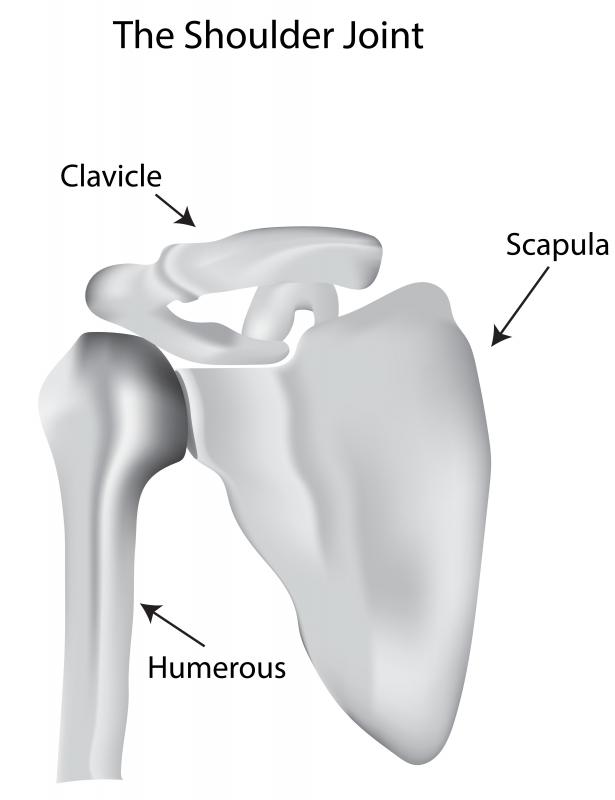At WiseGEEK, we're committed to delivering accurate, trustworthy information. Our expert-authored content is rigorously fact-checked and sourced from credible authorities. Discover how we uphold the highest standards in providing you with reliable knowledge.
What Are the Glenohumeral Ligaments?
The glenohumeral ligaments (GHL) are a set of three ligaments located on the front of the shoulder joint, connecting the glenoid fossa of the scapula, or shoulder blade, to the upper portion of the humerus bone in the upper arm. These ligaments work in conjunction with the coacohumeral ligament to maintain the stability of the glenohumeral or shoulder joint during most extremes of arm movement. They are named according to their relative position within the shoulder joint.
Superior glenohumeral ligaments (SGHL) have two points of origin, one on the supraglenoid tubercle and one at the base of the coracoid process, both parts of the sapula; the insertion point is on the lesser tuberosity of the humerus. Middle glenohumeral ligaments (MGHL) have a single point of origin, in the anatomic neck of the humerus. The insertion point is in the middle anterior portion of the glenoid labrum, a cartilage around the glenoid fossa that enlarges the socket of the glenohumeral joint. Inferior glenohumeral ligaments (IGHL) have a point of origin within the lower front of the glenoid labrum. Before insertion, this ligament divides into two sections, anterior and posterior, along the axillary pouch.

The glenohumeral ligaments support the movement of the shoulder joint by restricting the progress of the joint beyond the range of the stabilizing effect of nearby muscles. Tension only develops in the ligaments as the position of the humerus changes during movement. The ligaments contract with the tension and shorten, restricting the motion of the joint.

When the arm is at rest, the GHL are lax and stretchy. Adduction of the arm, when it is lowered, causes the SGHL to become taut, while the other two glenohumeral ligaments relax. Abduction, or raising the arm, causes the SGHL to relax and lengthen, while simultaneously contracting the MGHL and IGHL.
Rotating the arm causes the GHL to either relax or contract, depending on the type of rotation. Stretching the arm straight out to the side before circular movement causes a lateral rotation of the shoulder joint, putting tension on the ligaments. When the arm is hanging down from the shoulder joint before movement, the movement is called medial rotation. During this movement, the glenohumeral ligaments relax, allowing for greater range of motion.

Surgical alteration of the glenohumeral ligaments may allow for a greater range of motion among people that experience difficulty moving the shoulder joint during normal daily activities. The glenohumeral joint capsule can be surgically moved to alter the effect of the ligaments upon movement of the arm. A surgeon may excise a frayed middle glenohumeral ligament to allow movement in a frozen or immobile shoulder joint.
AS FEATURED ON:
AS FEATURED ON:













Discuss this Article
Post your comments